How to Write A Good Job Posting? 15 Tips for Writing One!
A good hiring strategy is incomplete without a good posting. Your job posting is essentially your first impression and first impressions matter. A well-written job posting can be the deciding factor between attracting average talent and attracting the best talent. But how to write a good job posting? Keep reading to find out.
How to write a good job posting?
Recruiting is a highly competitive industry. That’s why writing a great job posting is crucial to finding the perfect candidate. Are your job postings causing you to miss out on the best talent? Here are 15 smart ways to write a catchy job posting and attract the best candidates.
Understand the difference between a job posting and a job description.
First things first. Distinguish between a job posting and a job description. A job posting is a public advertisement aiming to sell a job position. And so, it should paint a picture of what it’s like to work for your company. Unlike a job posting, a job description or JD is a detailed write-up that explains the tasks and duties of a position. A JD also includes requirements for succeeding in a particular position.
To break it down further, a JD should inform candidates about the daily roles and responsibilities, whereas a job posting should excite them about your company and encourage them to apply for your opening.
For example, “You’ll collaborate with the C-suite executives to build our marketing strategy” would be better suited for a job posting, whereas, “make five sales per week” and “meet with 10 clients per week” are phrases fit for a job description.
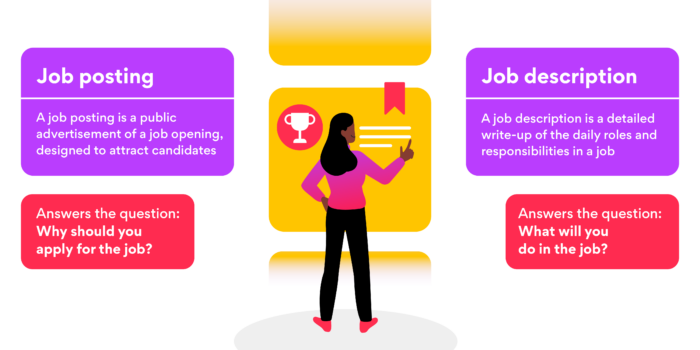
Job posting vs job description
Ensure your job posting has a catchy opening.
If your job posting does not have a great opening, it won’t attract great candidates. LinkedIn states that candidates are looking at twice as many job postings per application than they were two years ago. What’s more, candidates deem the information at the beginning of a job posting more important and pay more attention to it. But that’s not all—they decide in about 14 seconds whether to keep reading the job description. This stands especially true for GenZ. So if you’re looking to hire GenZ in software development, you need to come up with great opening hooks for your job postings.
In other words, you just have 14 seconds or less to catch the candidate’s attention. So you need to start your job posting with a great hook. Your introduction should be compelling enough to get candidates to continue reading.
Have a look at this example.
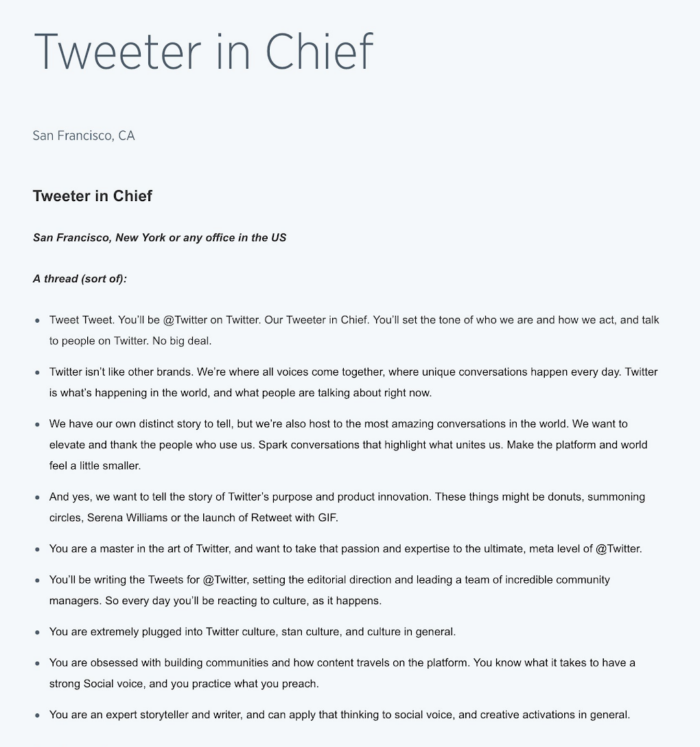
Start with a catchy job opening
In 2019, Twitter posted a job with an unusual title. The social media giant was looking for a “Tweeter in Chief.” Once you move past the title, the job is actually quite normal—Twitter wanted to hire someone to run their official Twitter account. But a title like that grabs your attention in a second, which is just what you need.
Avoid job titles that are too experimental or too vague.
How to write a good job opening? Though it’s important to keep the title interesting, make sure you don’t overdo it. Using titles like “full-stack ninja” and “back-end guru” in your job postings may lengthen your hiring process, causing you to miss out on candidates. These titles may sound fun, but candidates are likely to search for jobs using titles like “full-stack developer” or “senior back-end engineer.” This means that job postings with titles that are too quirky won’t appear on their search engine results page.
In addition, ensure your titles are not too vague. If you want to hire a full-stack developer but write “web developer” in your posting, you may attract the wrong candidates, costing you time and money. Remember, your job title should be clear and to the point without overselling the job opening.
Make it about the candidate and not the company.
Sure, talking about your company is important, but it’s not the most important thing for candidates. Think about it. Every candidate wants to know what the job has to offer them. So, address your candidates first. Have a conversation with them. Instead of using dry, impersonal statements like, “The ideal candidate will…,” personalize the job posting with words like “you” and “your” to address the candidates directly.
This will make the job posting more human and encourage potential candidates to envision themselves in the job. Using invitational language like, “Come join a creative team of … dedicated to …” is also helpful.
Remember, the people reading your job posting are just that—people! So write as if you’re speaking to them. Take a look at the example below. After giving a brief introduction, GitLab shares its job responsibilities and requirements as if discussing the opportunity with the ideal candidate. This approach allows job seekers to envision themselves in the role!
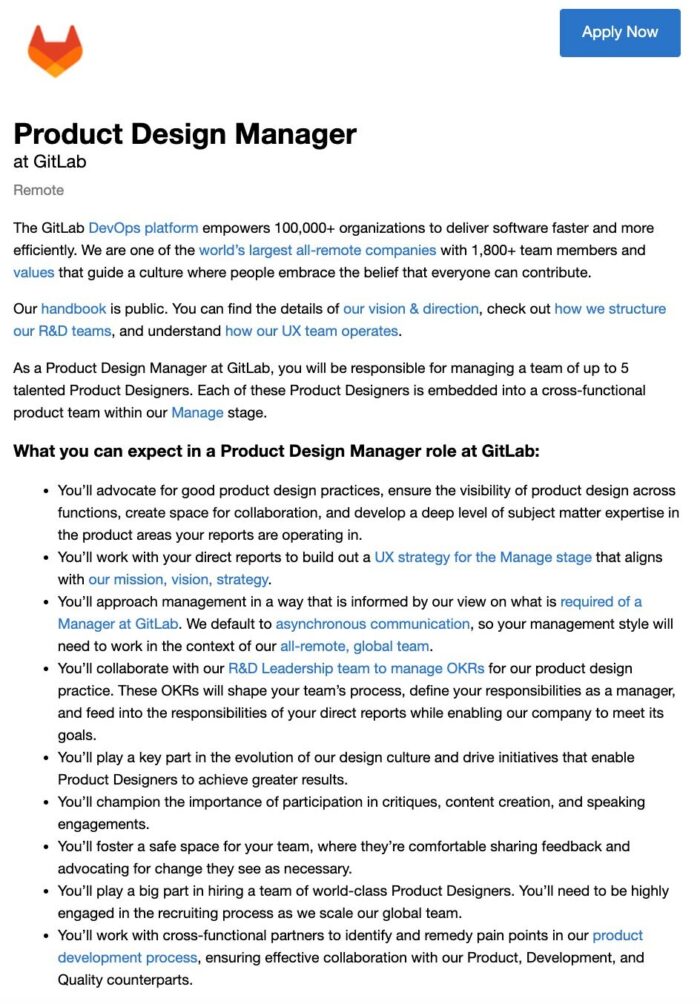
Make it about the candidate
List the required skills and qualifications clearly.
Once a candidate is excited about your job opening, they need to know if they are qualified for it. Start by listing the required skills, also known as must-have skills, below the job description. These are skills, educational achievements, and experience that are critical for the job. Finish the list with your preferred or nice-to-have skills. Now, these are skills that may not be mandatory but are desired in the ideal candidate. Preferred skills might include additional education, specific certification, or familiarity using certain software or tool.
Make sure you clearly mention all the skills required for the job. Use bullet points so candidates can quickly scan and assess their eligibility.
Focus on skills and results instead of degrees and colleges.
The IT hiring trends worldwide are changing. Don’t get stuck in a limited talent pool by focusing on four-year degrees from well-known colleges. Such requirements can act as barriers for otherwise-qualified candidates. For example, a candidate with a growth mindset from a lesser-known college and only three years of experience may be a better bet than someone from an Ivy-league college with a fixed, rigid mindset and five years of experience.
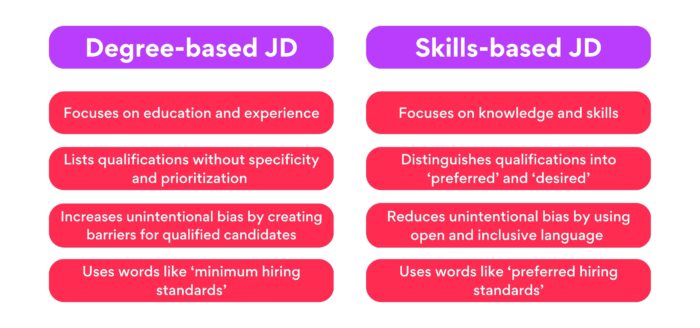
Degree-based job posting vs Skills-based job posting
Focus on skill-based hiring. Be picky with your must-haves. Too many non-negotiables can discourage candidates from applying for your job. In addition, define what success looks like one or two years on the job. Mention how the candidate can grow in the role.
Highlight the top benefits that come with the job.
How to write a good job posting? Show them what’s in it for them. Candidates exploring new career opportunities need compelling reasons to choose your job opening over others. To get them excited about your job opening, list down three to four features of the job position that you believe are particularly appealing. Describe the perks, benefits, office comforts, or specialized equipment that candidates will get to use in the job posting.
Does your company pay 100 percent of the medical benefits? Mention it. Have an amazing office with a perfect view? Mention it. Have flexible working hours? Mention it.
This part of a job posting is critical because it enables you to provide a quick recap of the key points that would interest a candidate to apply for the open position. Check out the example below!
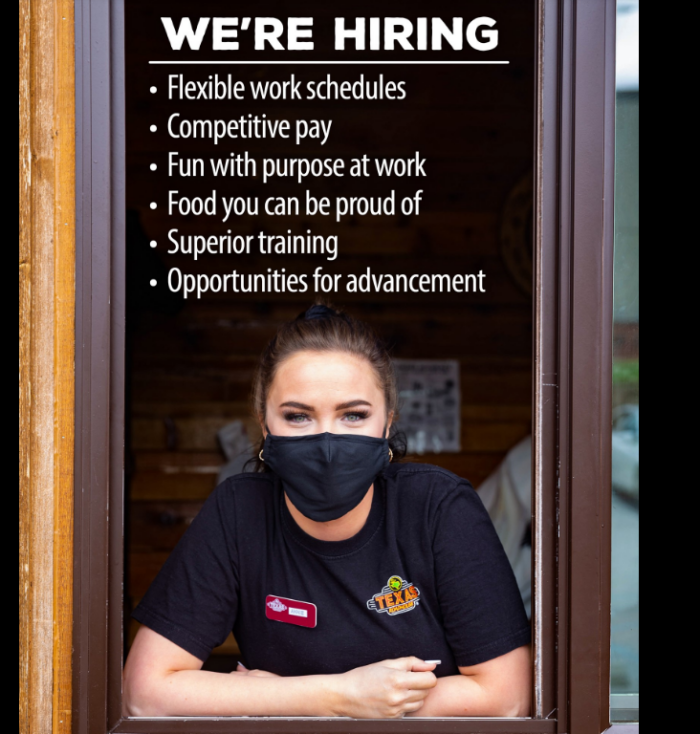
Highlight the key benefits in your job posting
Sell your company’s culture.
A few years ago, candidates had to sell themselves to a company by highlighting why they were the best person for the job. But recently, there’s been a massive shift. Now, candidates expect you to sell them on your company.
If your job posting is too formal, candidates may question your company culture. They may even believe that your posting is a glimpse of their future work experience in your company. A formally written job posting might indicate an unfriendly, toxic work culture where employees are subject to stringent rules. So ensure that you write a catchy job posting that highlights your company culture in the best way possible. Share your company’s mission, vision, and values so that the candidates get an idea of what your company is all about.
It’s equally important to have a solid online presence. If you make it through the first round of inspection by writing a good job posting, you gear up for the next round—a visit to your website and social media handles.
If your website looks like it was built back in the 1990s or your last tweet was posted in 2014, your potential candidates will move on without applying. This is especially true for remote jobs. For many candidates, these are legit remote job red flags. If you haven’t put in the resources to have a modern website or update your social handles, candidates may assume you won’t invest in their success either.
Use multimedia to make your job post engaging.
Why stick to plain old text when there’s so much more you can do with your job posting? Audio and video files can make your job postings a lot more engaging. A short message from the company CEO addressing the potential candidates can work wonders. If that’s not possible, let candidates see the office space or hear the hiring manager’s voice. Remember, the higher the sensory input, the higher the engagement.
A video may take more time but it may be worth the effort for high-profile or high-volume positions with huge applicant pools. Talking about the job opening with more than just bullet points brings it to life and helps candidates visualize the job. So the next time you think about, ‘How to write a good job posting?’ don’t forget to include multimedia in your content.
Be transparent about the application and interview process.
It’s always a good idea to outline your application and interview process in the job posting. Be transparent about the number of interviews and assessments you expect the shortlisted candidates to take. Doing so will make the candidates feel more comfortable with the hiring process and help them decide if they want to enter the hiring pipeline. If possible, share what the reporting structure looks like and how the role fits into the organization.
Hyperlink the job posting to the application on your company website. Be sure to clearly define the application deadline. Include a contact email and/or phone number.
Pro tip: the shorter the interview process, the more applicants you are likely to get. Several interview rounds tend to discourage candidates from applying. Several interview rounds may discourage candidates from applying for your job.
Ensure your job posting is concise and easy to read.
If we had to answer the question ‘How to write a good job posting?’ in just a sentence, we’d say – keep it short and to the point. Writing a great job posting is all about giving enough information to make it attractive but avoiding adding things that are not essential to the job. In addition, it’s about summarizing a list of extremely similar skills to avoid tedious reading.
Research shows that the ideal length of a job posting should be between 300 and 600 words in total or about one single-spaced page. Longer job postings do not mean more candidates. In fact, they tend to attract fewer candidates. Therefore, it’s important to keep your job posting concise yet interesting. This practice is important in any economy, but it’s even more critical in a tight labor market with a tech talent shortage.
Avoid jargon, acronyms, buzzwords, and slang.
It can be tempting to stuff the job posting with jargon if you’re hiring for a job you’re not familiar with. However, job postings full of complex, ambiguous, or informal language are a turn-off for potential candidates. Words like “self-motivated,” and “out-of-the-box thinker,” do nothing to explain the position or what a candidate’s day-to-day responsibilities would look like.
Clichés and slang can also carry unintended connotations. For example, “fast-paced” may indicate “too much work for too few people.” Similarly, phrases like “self-starter,” or “be your own boss,” can make candidates feel like their manager will never have time for them. Similarly, a candidate’s definition of “proactive” can vary from your own.
What’s more, adding your company’s internal acronyms in the posting can confuse candidates. For example, “M&A” can be “mergers and acquisitions” for you, but it could mean “marketing and advertising” for your potential candidates.
In addition, keep industry acronyms to a minimum for better readability. And don’t skip the Boolean basics. Abbreviations determine how your posting appears in a candidate’s search results. Abbreviations don’t mean your job posting won’t be searchable. However, too many of them can make it challenging for applicants to find you.

Avoid using jargon in your job posting
Check your text for unintentional bias.
Before you decide to google, ‘How to write a good job posting?’ check your past job postings for any and every kind of bias. Most companies unknowingly make their job postings too male-oriented, millennial-skewed, or white-inclined. Your choice of words in the job posting sends signals to candidates, without you realizing it. So screen your job posting content for unconscious bias using online tools. You can use the score to identify and edit the language to ensure your posting is inclusive and unbiased. Remember, the language you use in the posting affects whether women will apply for the job. Similarly, too much feminine language in the job posting can deter men from applying.
For example, a recent LinkedIn report states that when some companies say they’re looking for candidates who are “ready to hit the ground running,” they discover that the phrase is heavily male-oriented, likely discouraging many women from applying. LinkedIn COO Dan Shapero avoids the phrase “hit the ground running” because it prioritizes speed over quality in performance. Your job postings should also avoid words that connote gender bias. Make sure to use terms like “candidate” rather than “he” or “she” and “leader” or “chairperson” rather than “chairman.”
Edit, proofread, and post.
First impressions really do matter. The last thing you want is for your potential candidates to catch a typo in your job posting. Poorly written job postings tend to put off applicants and hamper your company’s reputation. Think about it. Would you apply for a job posting looking for someone “skilled at ruining an office?” How about applying for a “fronttend developer” or “prodct manager” opening?
Neither will your potential candidates. Spelling and grammar mistakes not only discredit your company but also decrease the readability of your job posting. What’s more, these typos search ranking. Ensure to edit your job posting and have another set of eyes review your job posting before submitting it.
Ask for feedback from existing employees.
You cannot get a holistic answer to ‘How to write a good job posting’ without roping in your team. For a better analysis of your job postings, request current employees to review them. The more authentic your job posting, the better chances you have of attracting good talent. And people already working at your company are the best source of truth. They’ll know what stands true in your job posting—and what doesn’t. They can tell you if you need to dial up your tone in the job posting or turn it down a notch.
Also, read: 5 Major Benefits of Customer Feedback for Software Development
An effective job posting can help your company stand out from the competition. But writing one can take considerable time and effort. Don’t have hours to spend on creating well-written, engaging job descriptions that attract the best tech talent? Try Turing.
How can Turing write a good job posting for you?
Turing’s AI-powered Talent Cloud helps you source, vet, match, and engage the world’s most deeply vetted software developers remotely. It takes Turing only four days to fill most roles—sometimes it takes less than a day! The best part? With Turing, you don’t have to go through the hassle of creating effective job postings for hiring talent. Turing takes care of that for you. What’s more, Turing also ensures high-quality matches for you through these postings.
We customize job postings for each role.
Turing prepares customized job descriptions that adhere to the unique needs of each company and job opening. Instead of using a repetitive template, we sift through a vast pool of information to pick out relevant information required for creating engaging and accurate job postings. We highlight the most important aspects of the client’s requirements and present them in an understandable manner. We also customize the job postings based on the client’s preferred locations or time zone overlap requirements.
You just need to share the basic information with us.
You don’t need to worry about writing an elaborate job summary for your posting. All you need to do is share your company website along with the tech stacks and skills required for the job, and we will take care of the rest. We clearly mention the must-haves, nice-to-haves, and other minimum requirements in the job posting. For example, if you want a software developer with at least three years of software development experience, fluency in English communication, and proactiveness, you will get just that. We find developers who share the same interests as the clients and help connect them.
What’s next?
Once we create content for your job posting, we publish it on platforms to ensure maximum, high-quality exposure.
Where does Turing publish these jobs?
- Turing.com—All our job postings go up on the Turing Live Jobs dashboard which is accessible to thousands of developers.
- Third-party platforms including IndeedIndia, Jooble, and IndeedBrazil—Our job descriptions are posted on other third-party platforms to help clients reach out to a broader pool of potential candidates who have been vetted and trained with Turing’s guidance.
What is the frequency of these job postings?
Our job posting frequency depends on the number of job openings companies share with us on a given day. On average, Turing publishes seven to 25 job postings in a day.
How long do these job posts remain active?
These job posts stay active for at least 30 days.
How does Turing process the job applicants?
Turing filters the best developers for you. You don’t have to sort through hundreds of unqualified job applications for your job opening. Turing’s AI-powered Talent Cloud deeply vets applicants, and our experts only send selected, responsible, high-performing developers your way. Thus, Turing reduces the time and effort that goes into evaluating individual talent.
Summary: how to write a good job posting?
Writing a good job posting may not always guarantee a fast and efficient hiring process. But it’s definitely a big step in that direction. Jobs keep evolving, so how you market them should evolve, too. Ideally, you should evaluate and edit your job marketing strategy every time you publish a new job posting. If that’s not possible, revise it every six months.
If you’re looking to hire remote software developers, try Turing. We can help you hire skilled, pre-vetted developers at unbeatable prices in just four days. Visit the Hire Developers page for more information.
Tell us the skills you need and we'll find the best developer for you in days, not weeks.
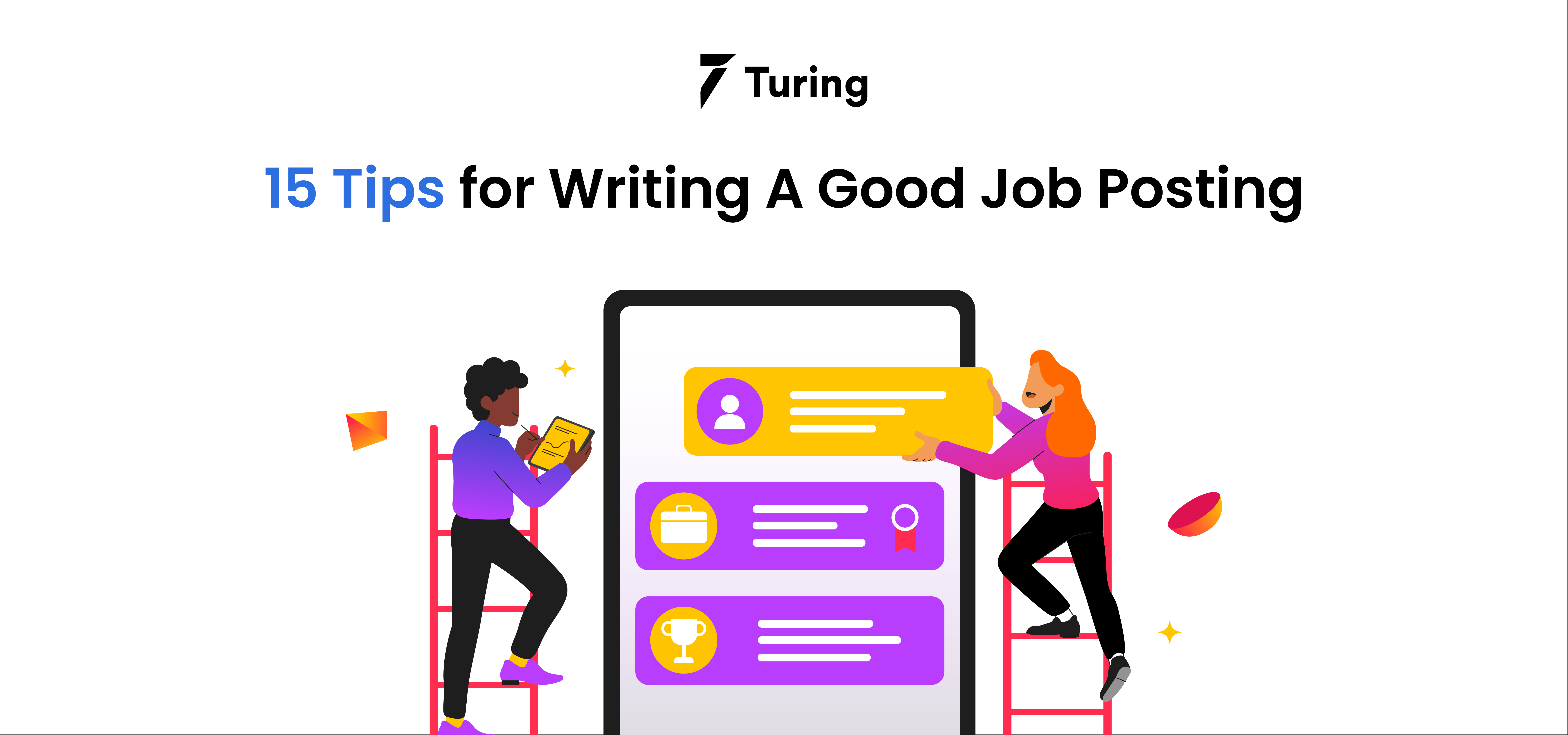






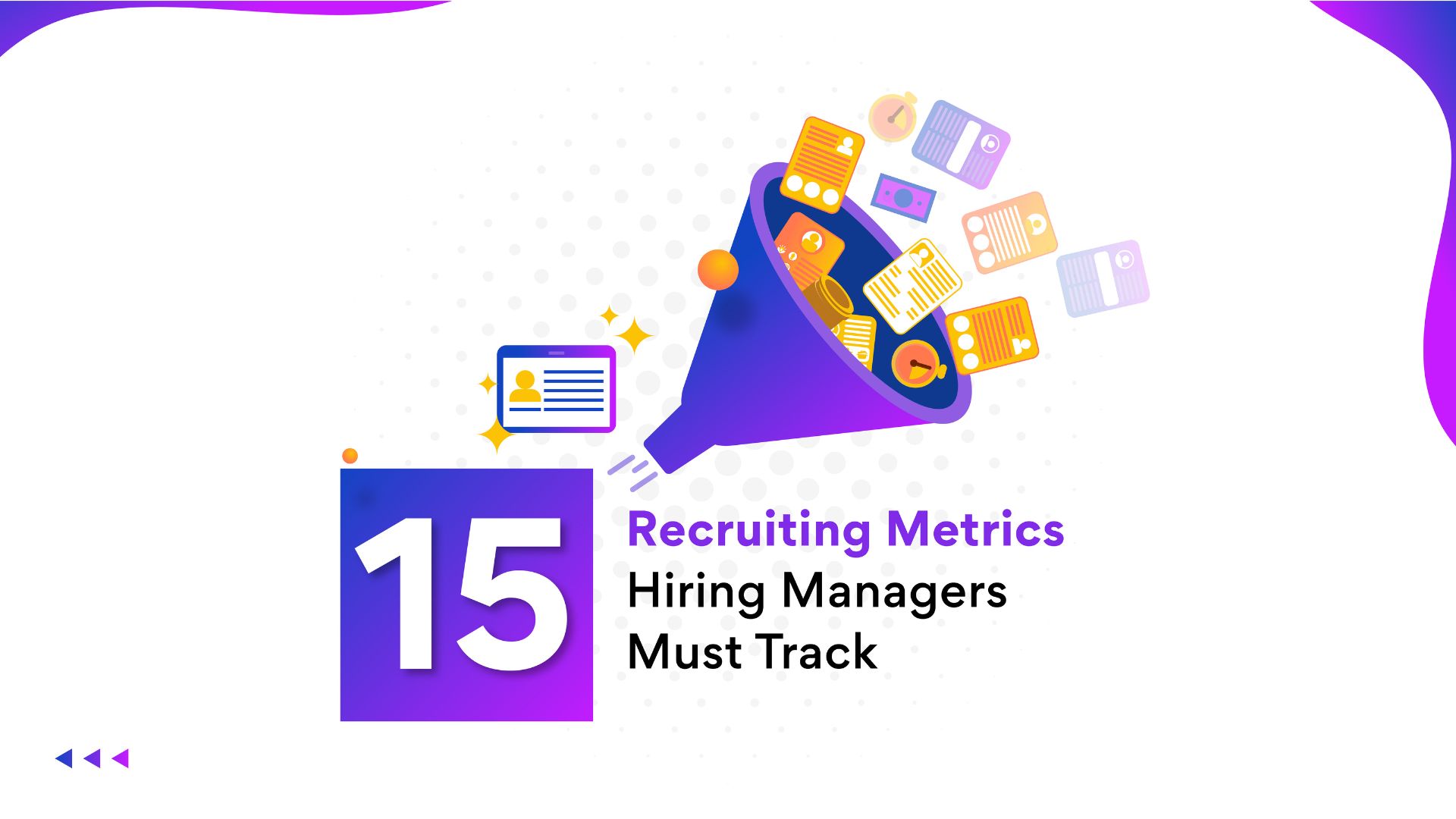





Awesome article